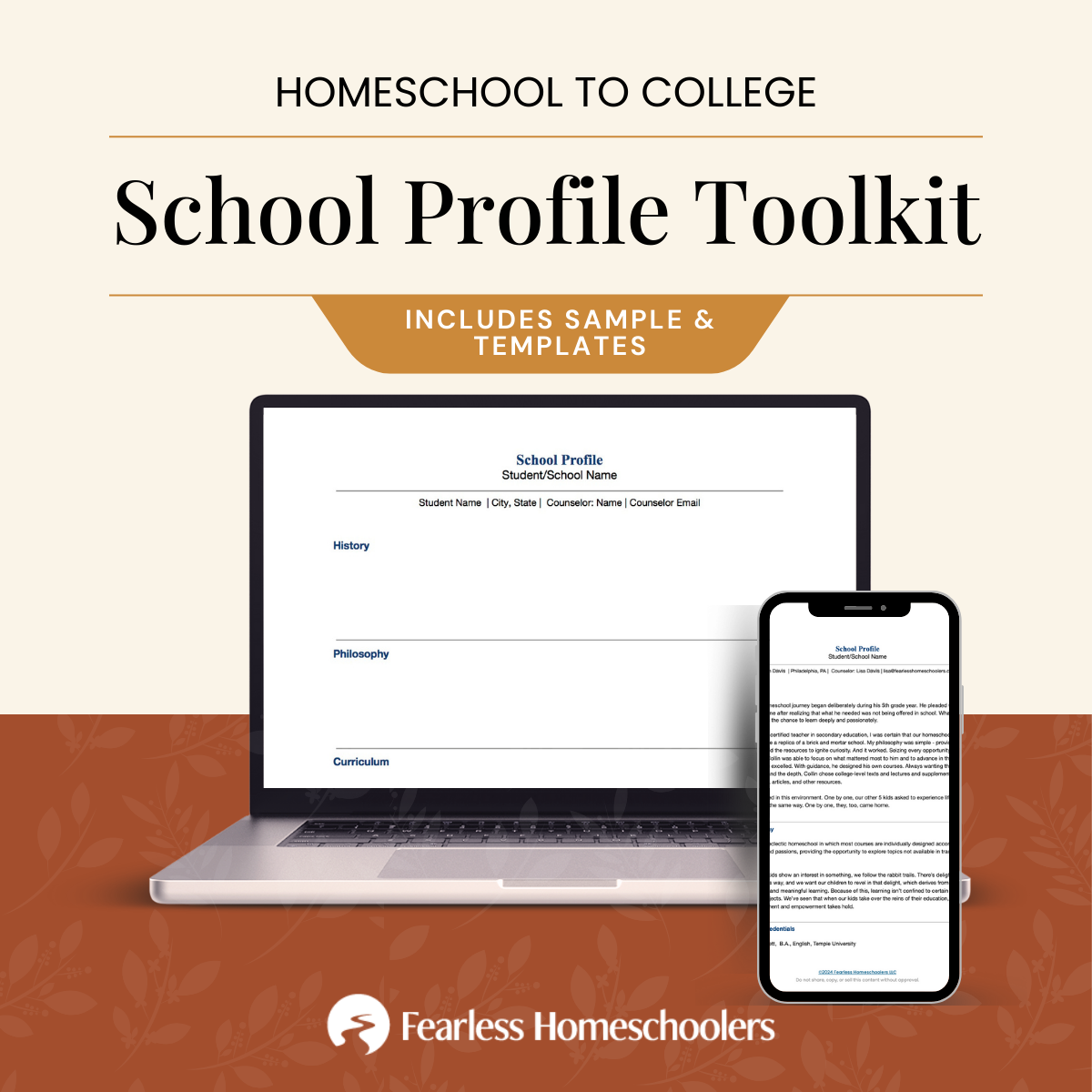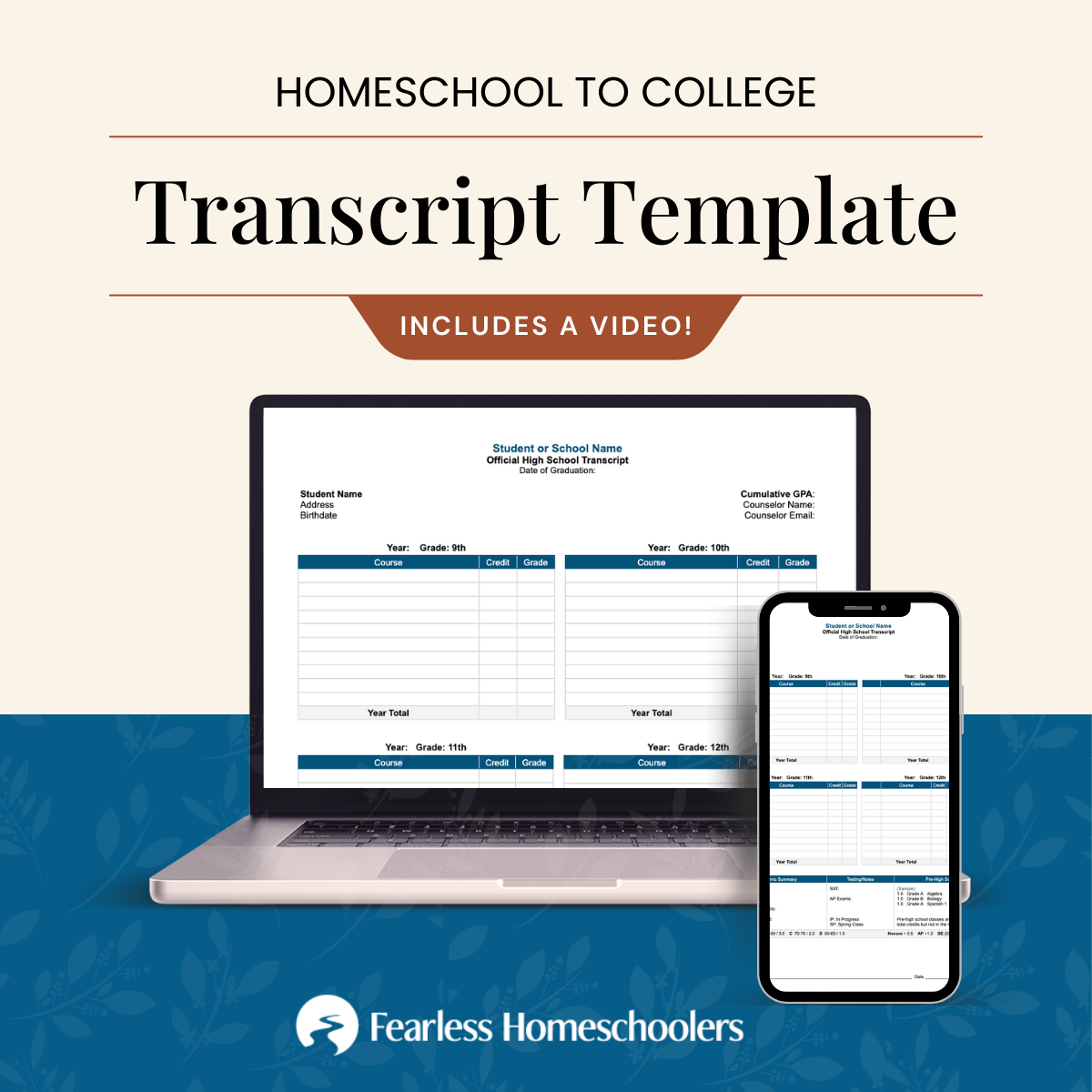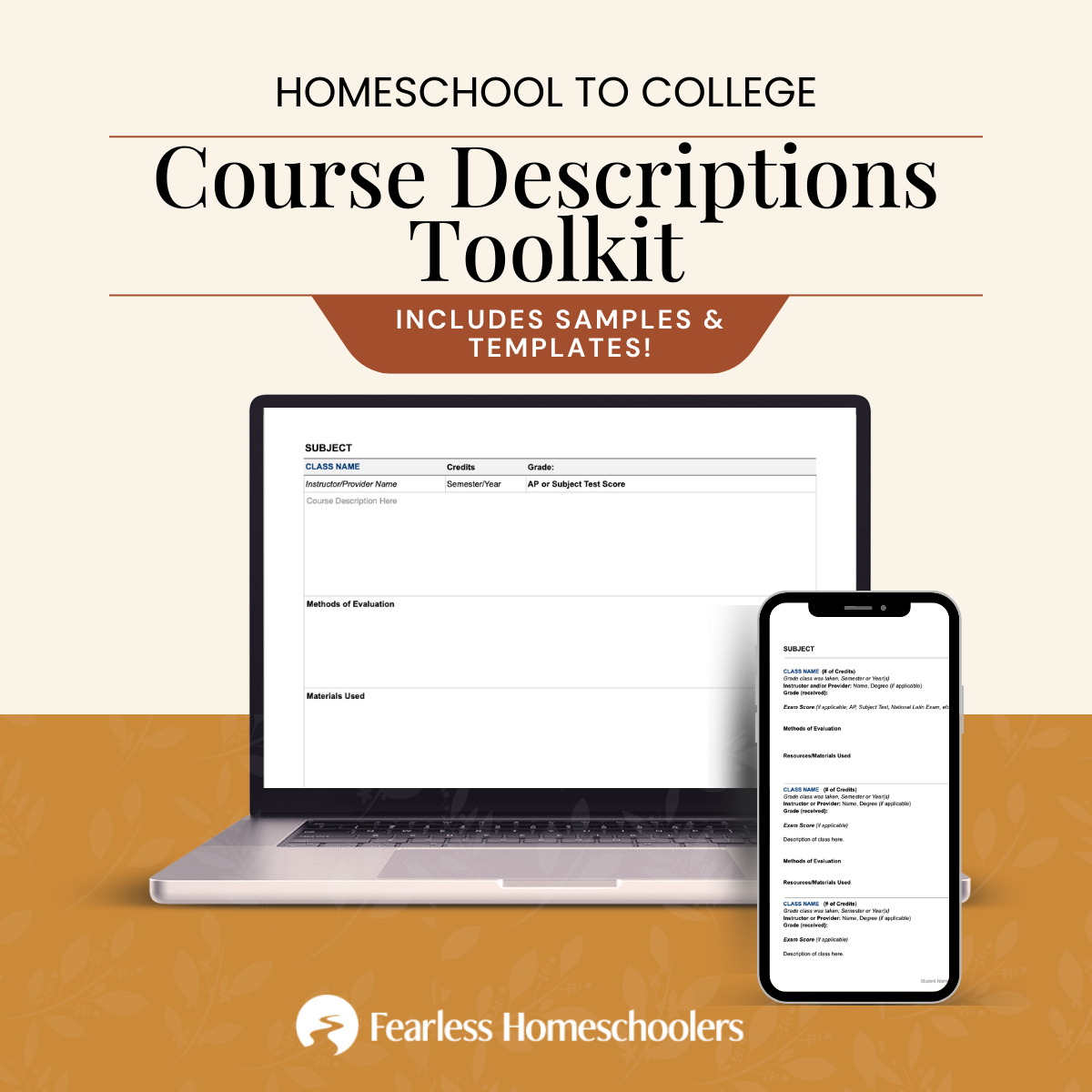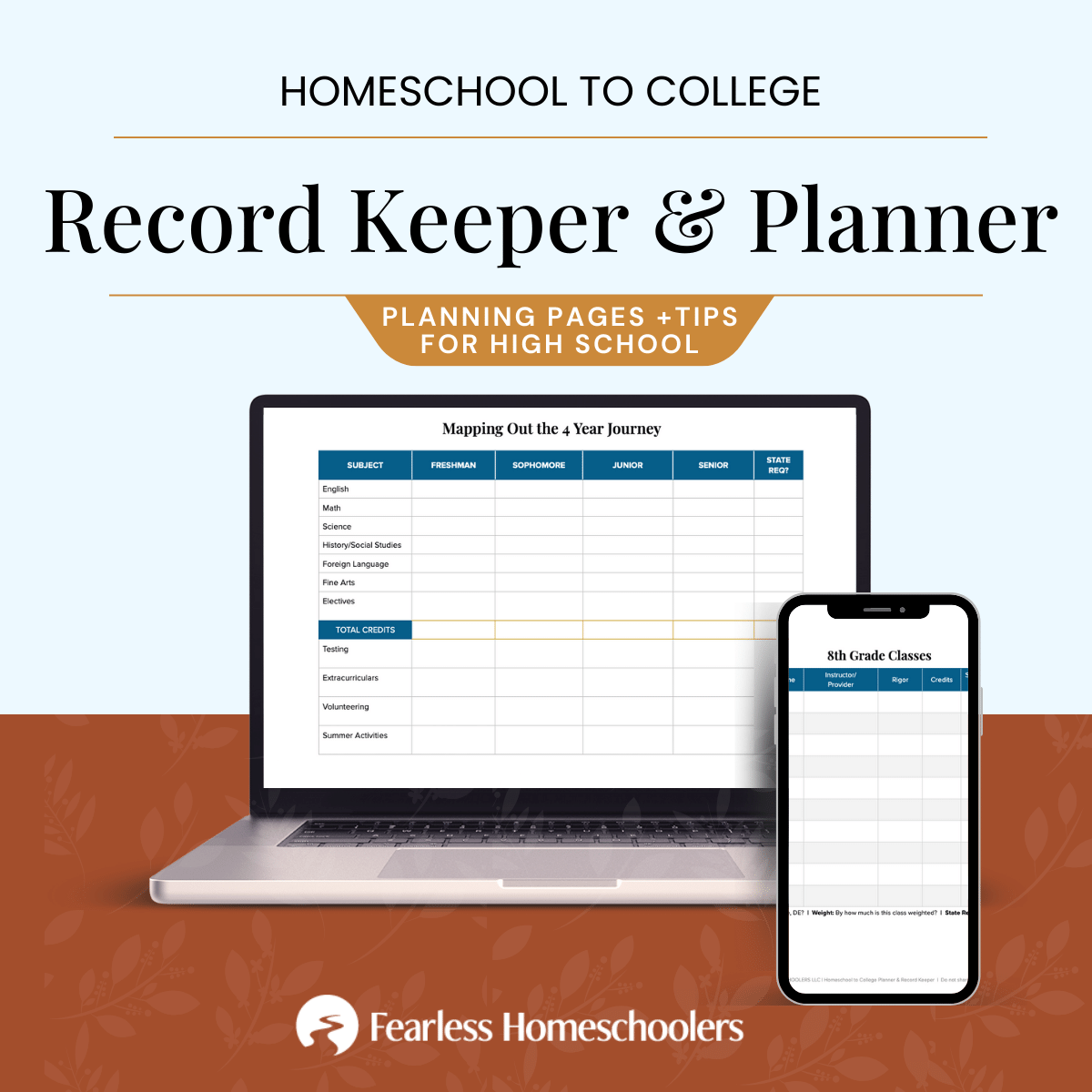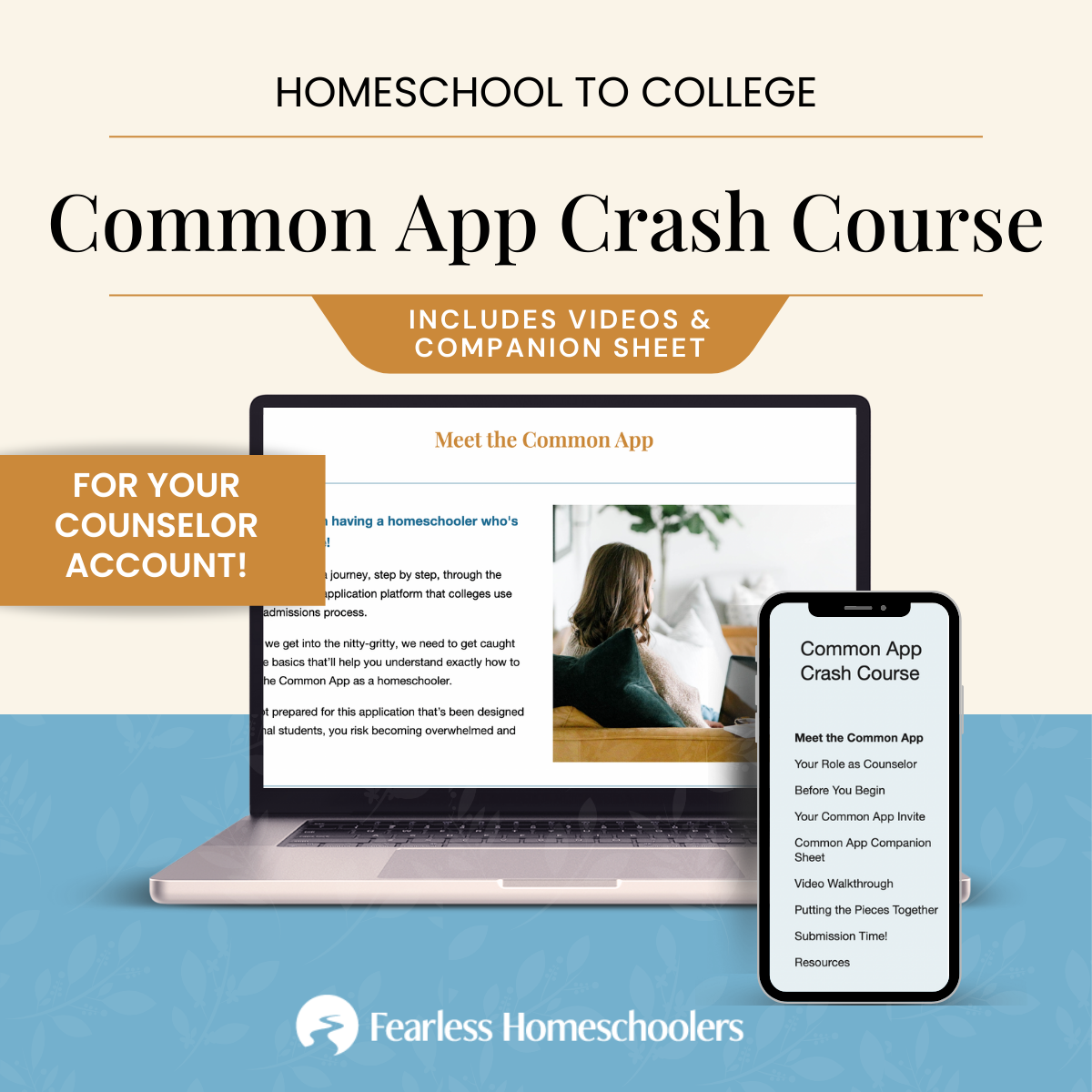How to Create Your School Profile As A Homeschooler
I have a close-up photo of my 10 year old son’s nose filled with soap suds.
You can see the intricacies of each bubble joined to another.
What you can’t see, however, is that he’s standing in a huge bathtub, covered from head to toe in bubbles. And bubbles are cascading onto the floor.
What you don’t know is that we had just moved into a new house and the master bedroom had a huge bathtub. He was super excited to be able to use it.
The close up of his sudsy nose is missing the context needed to truly understand (and remember) the story behind it.
Similarly, the power of your school profile lies in providing the missing context that colleges need.
In this article, I’m going to show you exactly how to create a school profile that tells the whole story.
But, more importantly, I’m going to explain why your homeschooler’s college acceptances are riding on it.

What is the Homeschool School Profile?
A school profile is a document that provides information about a school within the context of its students and its community. It gives an overview of the academics and opportunities offered.
Click here for an example of a school profile for a public school.
But Here’s The Thing
You’re not a public school or a private school. You can’t provide information about other students. And it doesn’t seem valuable to add information about your community.
The Good News?
You don’t have to.
The Not-So-Good News?
Many homeschoolers copy a brick and mortar’s school profile. Think about how crazy this is for a minute.
You have this great opportunity to explain the history, philosophy, and academic integrity of your homeschool and the first thing admissions officers see is your local school district’s stats or your region’s average salary? Nah.
👉 Get more insider tips, samples, and a template with the School Profile Toolkit! Grab it HERE!
Here’s How You Should Think About This
You’ve done something unique by letting your homeschooler write this chapter of their life. Now is your chance to invite admissions officers into the story.
As a homeschooler, the best place to start is at the very beginning. Take them on a journey from your homeschool’s beginnings, then weave in your educational philosophy, options, and decisions. Next, take a quick spin through your policies regarding grades and grading, credits and weighting. Finally, wind your way to a strong finish with your state graduation requirements.
If you stick with this basic formula, your school profile shouldn’t be more than 1-2 pages and that is perfect.
6 Parts of A Homeschool School Profile
Create the 6 subheadings below to make the school profile easy to write and easy to read.
Part 1. History
Here, write a brief overview of why your homeschool was created and how your homeschooler has taken advantage of it.
Part 2. Philosophy
Describe the philosophy of your homeschool. Is it interest-driven, student-led, self-designed, project-based? Rigorous, classical?
Part 3. Curriculum
Did you choose tutors or DE over AP courses for a specific reason? Did your homeschooler choose a particular path for a specific reason? Explain here.
Part 4. Grading, Credits, Weighting
This is the place to explain how courses are treated in your homeschool. Did you choose to weight or not to weight? How did you determine that certain courses are labeled honors? How did you assign credits?
Part 5. Educational Partners
Did your teen take outside classes? Online classes? Do they use tutors? Mentors? Include a brief description of each provider. Include a brief bio of each tutor.
Part 6. Graduation Requirements
Refer to your state’s homeschool code regarding homeschool graduation requirements. Mention any graduation requirements that are particular to your homeschool if you’d like.
Calculate your homeschool GPA with the Fearless Homeschoolers GPA Calculator!
Why a School Profile is Especially Important for Homeschoolers
Context. Context. Context.
College admissions officers are very familiar with the schools in their assigned region. They know the quality of academics and the quality of the students who graduate from that school.
As a homeschooler, you need to provide that context by providing evidence that your homeschool is a quality one - rooted in strong academics and unique opportunities.
👉 Get more insider tips, samples, and a template with the School Profile Toolkit! Grab it HERE!
Remember This
The school profile is about your homeschool. Not your homeschooler. Yes, there will be some overlap, but this is the place where you tell the story of your academics and your academic choices.
Related:How to Write a Homeschool Counselor Letter That Colleges Love
FAQs
Do I need a school name?
There’s no need to have a school name for the college application process. If you’ve always used one, great. Include it here. It’s certainly not necessary, though.
Do I include my community demographics?
I don’t typically recommend using local community info or demographics unless it provides the context needed to understand a unique family situation. Admissions reps are almost always assigned regionally - they’re very familiar with zip codes and their demographics. Just ask yourself if demographics would add value to your homeschooler’s story.
Should I make this uber professional or uber personal?
Ideally, you should weave a professional and personal flair into your school profile. Most families I work with make the school profile a more personalized one.
Do I refer to my teen by name?
Most school profiles I’ve read (and I’ve read a lot) use a personal approach and refer to the homeschooler by name rather than “the student”. But this is your story to tell. Write a profile that feels good to you.
Remember: there’s no right or wrong.
Where To Upload Your School Profile in the Common App
The school profile is a required document in your Common Application counselor account.
Step 1. Go into the “Profile” tab of your Common App Counselor Account.

Step 2. Within that profile tab, click on “School Profile” & “Upload”.
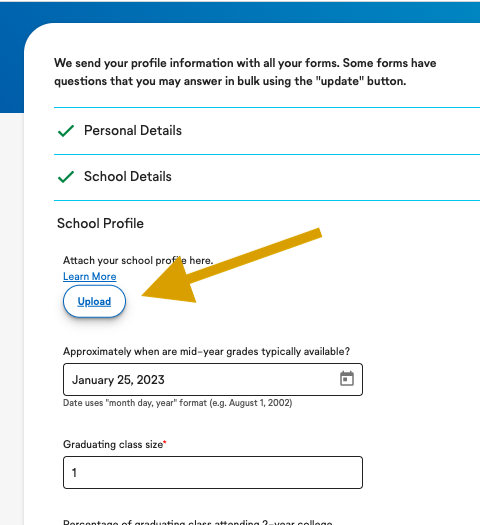
Step 3. Click on “Choose File” or “Google Drive” to upload your school profile.
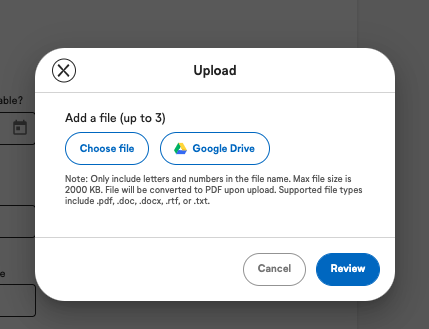
Step 4. Review and upload your school profile. Don’t forget to click “Yes” in the checkbox below.

Note: if you choose Google Docs, your document will automatically be converted into a PDF. No need to worry!
The School Profile Checklist for Homeschoolers
Use this checklist as you write and review your school profile.
- Name of School
- Name of Student
- Address
- Counselor Name
- Counselor Contact Info
- History
- Philosophy
- Community info (if it adds value)
- Parent Credentials (if impressive)
- Explanation of Grades, Credits, Weighting
- Explanation of Honors/AP/DE/audit
- Explanation of why a certain course or path
- Educational Partners
- State graduation requirements/graduation date
Conclusion
Before you write your school profile, look at your homeschool through a wide lens. What is missing from your homeschooler’s application because you’ve only shared the close-up details? What background is needed to understand why and how your homeschool exists?
Your 3 main takeaways:
1. Don’t make your school profile a copycat of a traditional school’s profile.
2. Create 6 subheadings to organize your profile.
3. Use the checklist to make sure you include the necessary bits.
Thankfully, I have another photo that tells more of my son’s bathtub story.
The background shows bubbles covering his body and spilling over the side of the bathtub and on to the floor. My son’s smile tells of the sheer joy he had in pouring an entire bottle of bubble bath in the water. His brothers laughing in the background reveal that this moment - this story - is one that will always be remembered.
Give admissions officers a complete story worth remembering.
👉 Get more insider tips, samples, and a template with the School Profile Toolkit! Get it HERE!
Want More on The Common App?
- How to Navigate the Common App as a Homeschool Parent
- How to Write a Homeschool Counselor Letter That Colleges Love
- How to Create a Homeschool Transcript That Colleges Love
- How to Create Course Descriptions as a Homeschooler
Your Turn
Do you have a name for your homeschool? Share in a comment below!

